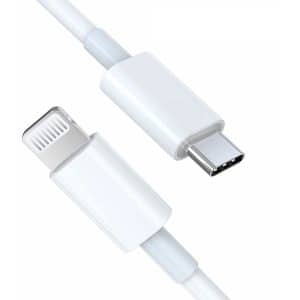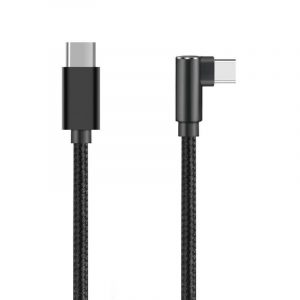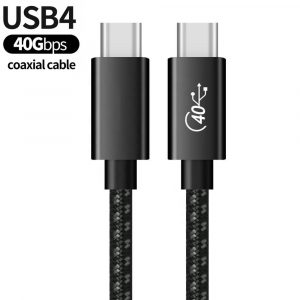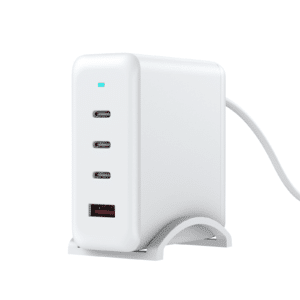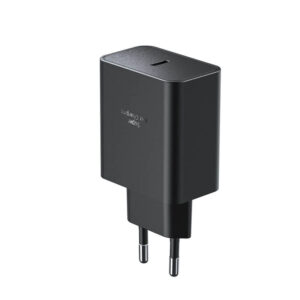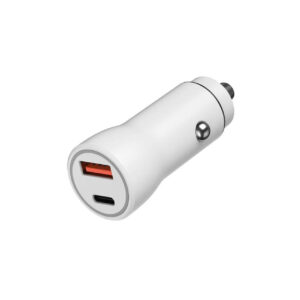I have to tell you: I’ve spent too much time trying to figure out the letters PD, PPS, and AVS on modern chargers. Are they the same? Which one is truly faster? I know you’ve been confused by the marketing too.
The main difference is voltage flexibility: standard PD uses fixed voltage levels; PPS allows fine-grained voltage changes (20mV steps) for better heat control; AVS, a newer standard, offers broader voltage configuration (100mV steps) to improve system-level efficiency, especially for higher power devices. I find that understanding this simple fact changes everything about how you pick the right charger for your needs.
But simply knowing the difference isn’t enough to choose the best solution for your products or your customers. Let’s break down the technical layers to see which protocol truly deserves your focus.
AVS VS PD VS PPS: What Are Their Core Differences?
I always tell my team that understanding the why behind the acronyms is the first step to smart product design. Why do we even need AVS and PPS if we already have USB PD? It’s about control.
I realized that standard PD is like a simple on/off switch with four fixed settings (5V, 9V, 15V, 20V); PPS is a dimmer switch allowing constant real-time adjustments; and AVS is a highly accurate programmable regulator, giving the device more stable input voltage. This control is important because it dictates charging speed, heat, and, most importantly, battery health over time.
Understanding Each Protocol
| Protocol | Full Name | Voltage Adjustment | Typical Range |
| PD | Power Delivery | Fixed steps (5V, 9V, 15V, 20V) | 5–20V |
| PPS | Programmable Power Supply | Dynamic micro-steps | 3.3–11V |
| AVS | Adaptive Voltage Supply | Ultra-fine voltage tuning | 3.3–21V |
PD (Power Delivery): The Foundation
USB Power Delivery is the foundation. It uses Fixed Power Objects (PDOs).
Simplicity: It’s simple for devices to request a power level.
Levels: Typically, it offers fixed voltages: 5V, 9V, 15V, and 20V.
The Problem: If your device’s internal battery circuitry needs, say, 12V, but the charger only provides 15V, the device must convert the excess 3V. This conversion is done inside your phone or laptop. Conversion always creates heat, which slows down charging and harms the battery. This is why standard PD, while universal, is not the most efficient for fast charging batteries directly.
PPS (Programmable Power Supply): The Fine-Tuner
PPS was introduced in the USB PD 3.0 specification as an optional feature. Its main goal is to minimize heat.
Granularity: PPS allows the device (sink) to request a specific voltage from the charger (source) in very small 20mV increments.
Direct Charge: This fine-tuning means the charger can output a voltage much closer to what the battery needs. This process can sometimes bypass the device’s internal charging circuit (direct charging), pushing the heat loss into the charger instead of the phone.
Application: This is popular with Android manufacturers (like Samsung’s Super Fast Charging) for quickly charging smartphones and smaller devices. It is very flexible and dynamic.
AVS (Adjustable Voltage Supply): The System Optimizer
AVS was first used in the high-power Extended Power Range (EPR) of PD 3.1, for laptops up to 240W. It has now been extended to the Standard Power Range (SPR) in PD 3.2.
Larger Steps: AVS adjusts voltage in larger 100mV increments.
Stability: Unlike PPS, which constantly adjusts, AVS is designed to provide a stable, constant voltage closer to the device’s system input voltage. It optimizes system efficiency rather than focusing solely on the battery.
Mandatory Status: AVS is now mandatory for SPR devices requesting high power (e.g., above 27W) under USB PD 3.2. This makes it a critical protocol for future product compliance.
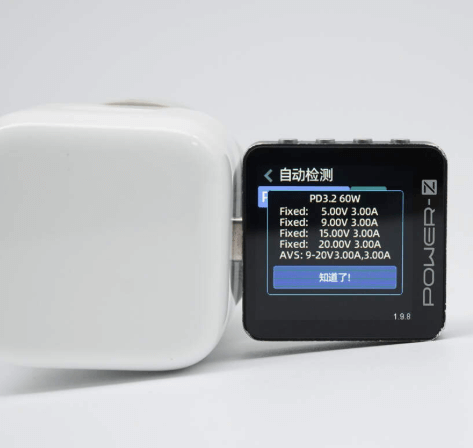
AVS VS PD VS PPS: How Do Voltage Steps Compare?
When I first learned about 20mV versus 100mV, I thought smaller steps were always better. That seems logical, right? But I was wrong. The size of the voltage step is not about precision; it’s about the goal of the charging.
The smaller 20mV steps of PPS are designed for a fine, real-time “conversation” with the battery to minimize heat, whereas the 100mV steps of AVS are meant to provide a more stable, system-efficient input voltage, often over a much wider range up to 48V. It’s the difference between a sculptor (PPS) doing detailed work and an architect (AVS) setting the foundational structure for high performance.
Why PPS Needs 20mV Steps
For a smartphone battery, the charging voltage needs to follow the battery’s state of charge very closely to avoid over-stressing the cells.
Direct Charging: When a charger uses PPS, it is often talking directly to the battery’s management chip. As the battery fills, its voltage rises slowly. The 20mV steps allow the charger to match this rise almost perfectly.
Thermal Control: This near-perfect match means minimal voltage drop is needed inside the phone, reducing heat. If the charger overshoots the voltage by even a little, the phone has to dump the difference as heat. The small steps are critical for keeping the device cool while charging very fast.
Why AVS Uses 100mV Steps
AVS is designed differently. It primarily aims to optimize the voltage supplied to the entire system (the main power rail of the device), not just the battery.
System Stability: Devices, especially laptops and high-power tools, often need a stable, constant input voltage to run the CPU, screen, and peripherals while charging. AVS provides this stable Adjustable Voltage Source (AVS).
Less Overhead: The larger 100mV steps simplify the power supply’s design. The charger does not have to constantly make micro-adjustments.
High Power Focus: AVS operates across a much wider voltage band, especially in EPR, going from 15V up to 48V. Using 100mV steps across this huge range is more practical than using 20mV steps, which would create huge complexity and negotiation time.
This difference in step size highlights the core design difference: PPS is for dynamic battery charging; AVS is for stable system power.
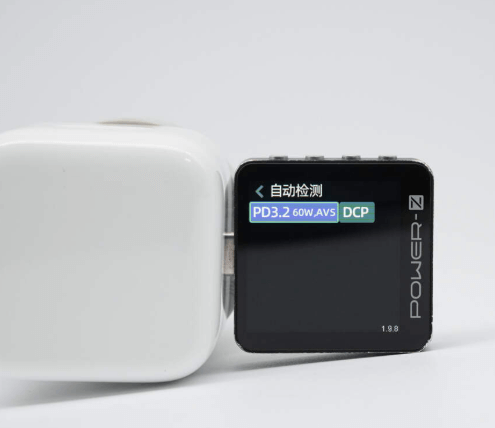
Protocol Negotiation Goals
| Protocol | Step Size | Adjustment Frequency | Best Suited For |
| PPS | 20mV (High Precision) | Continuous / Real-time | Phones, Small Devices |
| AVS | 100mV (Standard Precision) | Intermittent / Negotiated | Laptops, Monitors, High-Power Devices |
| PD | Fixed | One-time Negotiation | Universal Compatibility |
How does the standard USB PD protocol differ from PPS and AVS?
When I first used a PD charger, it seemed fast enough. But when PPS and AVS arrived, the difference in stability was obvious.
PD is based on fixed voltage levels, while PPS and AVS dynamically adjust them. PPS works with smaller voltage steps, while AVS fine-tunes voltage even more precisely across a wider range.
| PD type | PD 3.0 | PD 3.1 | PD 3.2 |
| Protocol standard | PPS | EPR AVS | SPR AVS |
| Release time | Feb-17 | May-21 | Oct-24 |
| Charging specification | 3.3-5.9V 3A 3.3-11V 3A 3.3-16V 3A 3.3-21V 3A 3.3-21V 5A | 15-28V 5A 15-36V 5A 15-48V 5A | 9-20V 5A |
| Adjustment Step Size | 20mV | 100mV | 100mV |
Device Compatibility
PD remains the universal standard for most laptops and accessories. PPS dominates Android phones like Samsung Galaxy S22–S24. AVS is optimized for Apple’s iPhone 17 and future devices, supporting 45W fast charging with perfect heat control. Choosing the right charger depends on your device’s protocol recognition.
Which charging protocol offers better thermal performance and efficiency?
This is the question that really matters to the end-user and the B2B buyer. Less heat means longer product life and a safer user experience.
For minimizing heat inside the phone during charging, PPS generally has the edge due to its 20mV fine-tuning capability, which enables precise, low-loss direct charging; however, AVS offers superior system-level thermal efficiency and stability for higher power devices like laptops. I see it as a trade-off: PPS wins the phone heat battle; AVS wins the laptop and high-power stability battle.
Analyzing Heat Dissipation and Energy Loss
Efficiency in charging means minimizing energy wasted as heat (Ploss=Vdrop×I). Both PPS and AVS aim to reduce Vdrop (voltage difference between the charger’s output and the device’s need).
PPS: The Heat-Buster for Batteries
The goal of PPS is often to bypass the phone’s internal DC-DC converter and feed the power almost directly to the battery.
Minimal Vdrop: By adjusting the voltage in 20mV steps, the charger can output almost the exact voltage the battery needs at that moment. This results in the smallest possible Vdrop at the device’s charging port.
Heat Shift: The bulk of any remaining power conversion heat is shifted out of the device and into the power adapter, where it can dissipate safely and effectively. This is why PPS chargers often feel warmer than the phone itself during fast charging.
AVS: Stability for High-Power Systems
AVS, while having larger voltage steps, prioritizes giving the device’s internal power delivery rail a stable, optimized input voltage.
Less Conversion Burden: The device tells the AVS charger the ideal voltage to run its internal components. The charger outputs this stable voltage. This prevents the device’s internal converters from having to work hard or draw unstable power, which improves overall system efficiency.
Higher Power Range: AVS’s ability to handle higher voltages (up to 48V in EPR) with stable 100mV steps is critical for large devices where a minor Vdrop at 48V still results in a large power loss. AVS helps manage this efficiently.
For B2B exporters designing consumer products, if your product is a phone or small power bank, PPS is the best thermal choice. If you design laptops, docking stations, or industrial gear, AVS offers the needed stability and efficiency at higher power thresholds.
AVS VS PD VS PPS: What Does the Future Hold?
I often get asked, “Should I skip PPS and only design for AVS now?” My answer is always: the future is about convergence under the USB PD umbrella, but not elimination.
The future is a world where all high-power USB-C sources will be required to support AVS for compliance, while PPS will remain an optional, highly desirable protocol for specialized fast-charging applications like smartphones. I see AVS becoming the standard baseline for all power bricks, and PPS becoming the mark of a premium, fast-charging device.
Beyond Speed
Future USB-C chargers may combine AI with sensors to detect battery condition and environmental temperature, adjusting voltage accordingly. This means safer, faster, and more efficient charging. With Apple adopting AVS and Android brands refining PPS, the competition drives innovation toward universal smart charging.
Conclusion
Understanding PD, PPS, and AVS is about knowing your charging goals: use PD as the base, use PPS for extreme phone charging speed and heat control, and use AVS for stable, efficient high-power system delivery. Choose based on your target device.
FAQ
1. Is AVS faster than PD and PPS?
Yes. AVS (Adaptive Voltage Supply) can adjust voltage more precisely than PD or PPS, reducing heat loss and improving power efficiency. This makes it slightly faster in real-world charging tests.
2. Can I use a PD charger for a device that supports AVS?
Yes, but you won’t get the full charging speed. The charger will fall back to PD’s standard voltage levels, meaning less fine-tuned control and slightly higher heat output.
3. Which devices support the AVS charging protocol?
As of now, AVS is mainly supported by the latest Apple devices, such as the iPhone 17 and future MacBook models. More brands are expected to adopt it as USB-C standards evolve.
4. Does PPS still matter if AVS exists?
Absolutely. PPS (Programmable Power Supply) remains essential for most Android phones. It offers smooth voltage adjustments and safe heat management — AVS just takes this a step further for Apple devices.
5. How do I know which charging protocol my device supports?
You can check your device’s technical specs or the product page. Look for terms like “USB-C PD,” “PPS,” or “AVS.” Some chargers and cables also list supported protocols on their labels or packaging.
Related Products
Wandkey Electronic Co., Ltd – Your Trusted Partner for Premium Phone Accessories
Wandkey Electronic Co., Ltd is a leading manufacturer specializing in high-quality phone accessories, offering a full range of USB-C Cables (2.0/3.0/3.1/3.2 Gen 2/USB4), Lightning Cable, iPhone Charger cable, PD Fast Charer, GaN Wall Chargers, Car Chargers, and more. With UL, CE, RoHS, Reach, PSE, KC, FCC, UKCA certificate, ensuring top-tier quality and safety.
What We Offer
We provide OEM & ODM services to help brands and businesses customize their products, including:
✅ Custom Branding & Logo Printing – Enhance your brand presence with personalized designs.
✅ Tailored Product Specifications – Customize cable lengths, charging power, materials, and more to fit your needs.
✅ Certified and High-Quality Manufacturing – Strict quality control and compliance with international safety standards.
✅ Packaging Customization – We offer bulk packaging, retail packaging, and eco-friendly solutions.
✅ Technical Support & After-Sales Service – Professional guidance from product development to after-sales assistance.
Who We Serve
Our business model is B2B wholesale, catering to brands and manufacturers who require premium charging accessories. Our main customers include:
✔ Phone accessory brands looking for high-end charging solutions.
✔ Electronics and smart device manufacturers needing reliable charging components.
✔ Medical equipment companies, monitoring system providers, and other industries requiring certified power solutions.
Looking for a reliable supplier for premium USB cables and chargers? Contact us today to discuss your project needs and get a customized solution tailored to your brand.
Top Topics
2025 Latest MFi Authorized Manufacturers list
Differences of Lightning Connector
How to check MFI Certification
How to get MFI Certification for Your Brand?
USB C Pinout Guide and Features
Understanding USB PD 3.1 vs PD 3.0 vs PD 2.0
USB 2.0 vs 3.0 Cables: Speed, Compatibility & Buying Guide
Why does the MFI Certified Lightning Cable so expensive?
MFI Product Packaging Requirement?
Disassemble MFI Lightning Cable
How do we guarantee the quality?
How to identify counterfeit or uncertified Lightning connector accessories
How to Choose Fast Charging Cable for Your Phone
How do I choose a USB-C cable?
Differences between USB 3.0 3.1 and 3.2
Test on USB C to USB C 3.1 Cable
Test on Right Angle USB C to USB C Cable


